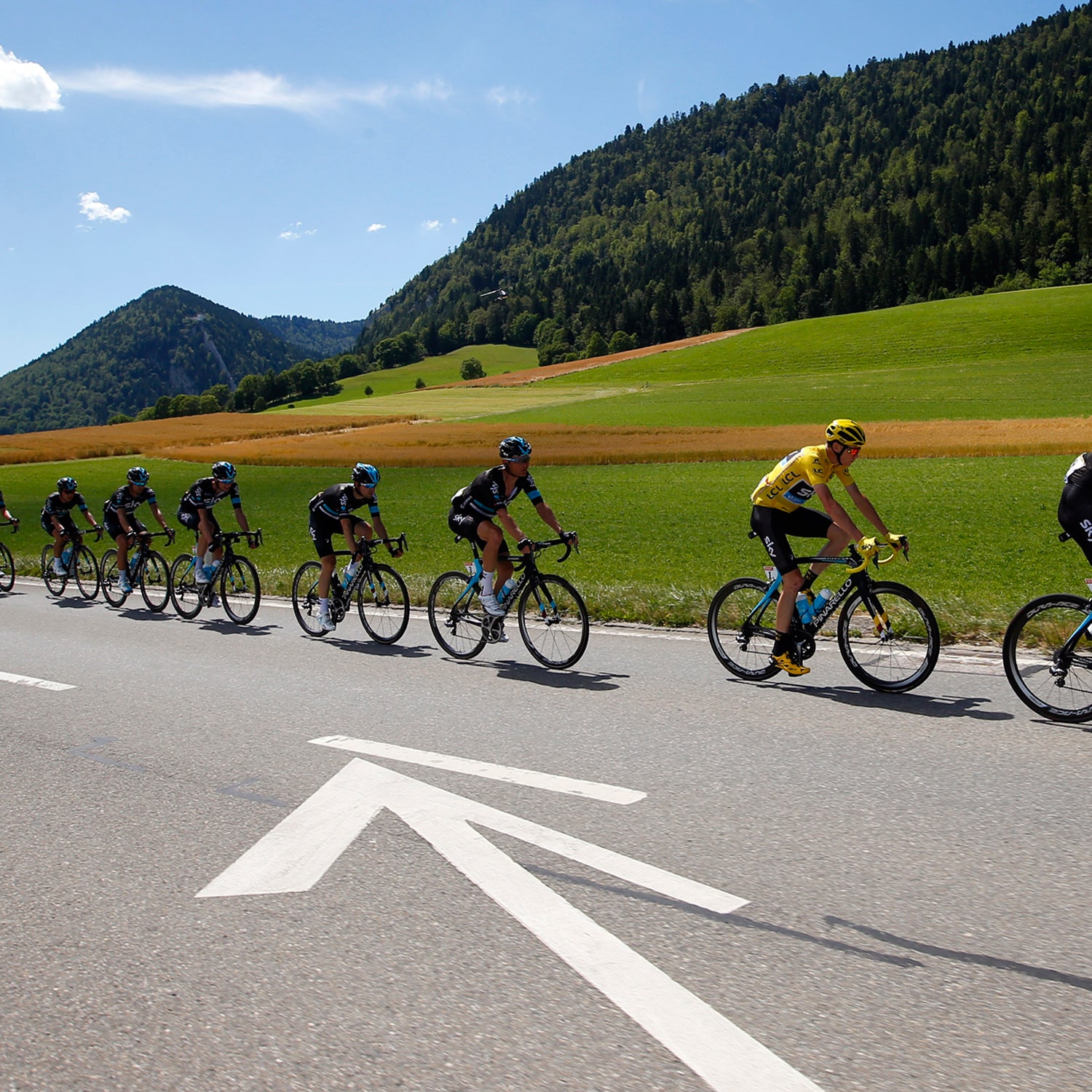The Tour de France is one of the most punishing endurance event on earth. Twenty-three days and nearly 2,200 miles long, it’s akin to running a marathon every day for nearly three straight weeks. No surprise, cycling’s most prestigious race exacts a tremendous toll on competitors. On average, each racer will consume as much as 8,000 calories per day. That’s three to four times what nutritionists recommend for the rest of us.
And yet obtaining those calories is no longer a matter of shoveling as much food down your gullet as possible. There’s too much at stake today for such a slipshod approach. Careers, glory, and millions of dollars in sponsor contracts and endorsements ride on the outcome of this Tour, which is why every detail of these racers’ lives has been fine tuned in preparation for these three weeks in July—and that includes when, what, and how they eat.��
Upon Waking Up: The moment riders rise, they often drain a glass of juice, which��gives a quick bump of energy and starts the rehydration process.��
At Team Breakfast: Gone are the days of heavy steak breakfasts. Nowadays, riders sit down to a better balance of carbs and protein. There’s rice, oatmeal, pasta, muesli, eggs, yogurt, breads, and plenty of fluids. It’s a big breakfast—as in 1,000 to 1,500 calories big.
On the Way to the Starting Line: There’s usually a three-hour gap between breakfast and the actual race start. Remember that 1,500-calorie breakfast (and the 2,500-calorie dinner from the night before)? “The toilet on the bus is a very, very popular place,” says Allen Lim, founder of nutrition company��Skratch Labs,��“because no one wants to start a four to six-hour race with a ton of food in their bowels.” Riders, however, are still topping off the tank, eating and drinking on the bus.��
On the Bike: Racers are tearing through 700-1,000 calories per hour while on the bike, and that means eating the moment they begin riding.��Solids—like paninis, rice cakes, and fruit—provide energy for the long haul and are generally the go-to items for the first half of each stage. Later in the race,��as the pace typically picks up,��easy-to-consume energy bars and gels come in handy. Riders are also drinking constantly—about 16 to 24 ounces of water and electrolyte solutions per hour.��
“If you look inside a musette bag, you’ll see that stuff in there—your gels and bars—but you’ll also have something like an apple tart from the local bakery, wrapped up in tin foil,” says Lance Armstrong. “I guarantee you, every dude eats that tart.”
Back on the Bus: Recovery time. Despite eating throughout the race, each rider is in serious calorie-deficit mode now. Their bodies can only absorb between 250 and 300 calories per hour while riding,��and they’ve been burning at least twice that amount. Once they ditch the funky chamois and shower, they are back on the tour bus, guzzling protein-and-carbohydrate recovery shakes and eating rice, boiled potatoes and other carbohydrates to help recharge their spent glycogen stores. There’s a 20-minute golden window when their body best absorbs these calories and nutrients.
During Dinner: This is the big opportunity to restore what’s been lost. Riders will consume between 2,000 and 2,500 calories of��a carefully prepared mix of carbs, protein, and fat. This includes pasta, rice, quinoa, and lean meats.��“It’s also a good time for salad and vegetables,” says Lim. “Riders need these nutrients and this is the best time to take fiber on board, since they have the time now to digest it.”
At Bed Time: Riders often grab another protein shake,��a bowl of cereal, or��yogurt before hitting the sack. As with dinner, protein is a must at this time, as it helps repair muscles that have taken a hit during the day’s racing.��


